Tender BBQ Ribs Tips
When it comes to barbecuing, there are endless options – from types of rib cuts to barbequing methods – besides the diverse versions of the super delicious barbeque recipes, BBQ sauces, and so forth. But one thing is common – tender, melt-in-mouth, succulent barbeque on the plate, on a sweltering summer afternoon or a freezing chilly climate – it doesn’t matter.
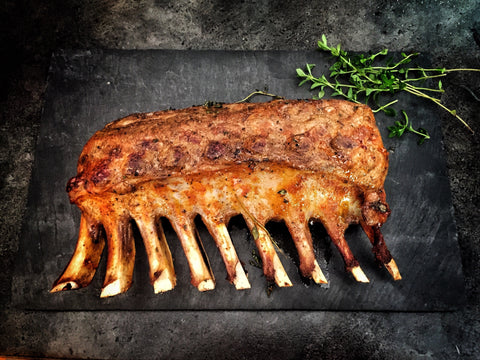
Photo by pascal claivaz / Pexels
To make the BEST tender BBQ ribs:
#1 Choose the finest ribs.
#2 Cut and prep the rib rack.
#3 Removing the silver skin helps smoke and seasoning soak through.
#4 Keep the seasoning simple.
#5 Select the grill over the oven as long as time is not an issue.
#6 Hardwoods work great.
#7 Slow cook the rib racks over low, indirect heat.
#8 To prevent the ribs from becoming hammy, marinate the ribs for a short time before grilling.
#9 Spraying in between will keep the meat moist.
#10 Open cook – cover cook – open grill; be patient.
#11 Finish off by applying the BBQ sauce.
#12 Relish your BBQ.
Some of us like it falling apart, some just done. But, whatever is your favorite, barbecues are a great addition to a party meal or a family get-together. While your grill or oven does all the job, it frees your hand, so you can pay attention to the rest of the menu and only need to check on your BBQ occasionally. Use a timer for time tracking purposes.
Time to roll up your sleeves and get started!
What are the different types of ribs available in the market?
When choosing pork ribs, there are three available options to choose from.
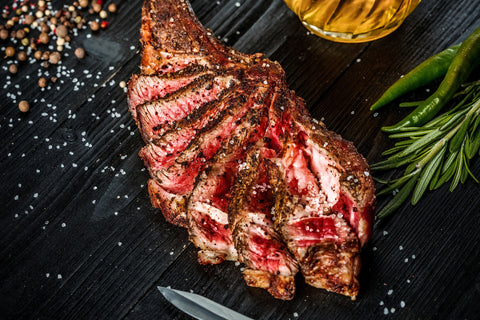
Photo by JESUSGONZ_ / pixabay
- Baby back ribs – No, they’re not from baby pigs – these ribs are shorter than the spare ribs, hence the name. The ribs are located around the loin on either side of the animal’s spine. If you prefer tender ribs, go for these covetable ones, which self-explains their high price and demand—no wonder they’re the choice pick of any barbecue shopper.
- Spare Ribs – Spare ribs get the name as these are portions cut off from the sides of the back ribs. They run along the animal’s belly. Though they are called spare ribs, they are full of flavor and scrumptious with lots of meat and fat. Choose these for a more satisfying experience.
- Country Style Ribs – Are these really ribs? Frankly, they’re not. They come from the shoulder portion of the pig, and if you find any bone in them, it’s the shoulder bones and not the ribs. So if you prefer meatier cuts, get these chunks. Let’s get rolling!
It’s beef time!!! Again, there are three of them to choose from.
i) Beef Back Ribs – Back ribs come from the animal’s back, and since it is an expensive part, your butcher cuts off the prime rib and ribeye meat. So, all your delectable beef is between the bones. Feast on!
ii) Beef Short Ribs – These ribs come from the chuck portion, i.e., from the first to fifth ribs near the breast bone. They’re relatively shorter than the regular ribs. Thus, they don’t make a great steak.
We can categorize short ribs further based on how they cut the rib portions:
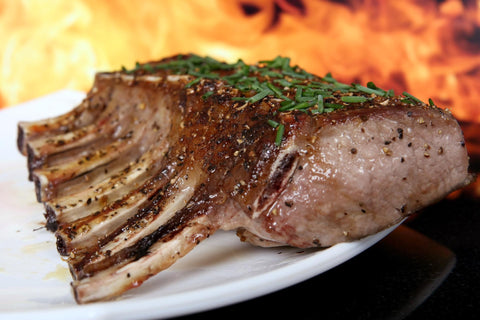
Photo by Shutterbug75 / pixabay
- Flanken Ribs – is cut across the bone about 2 inches.
- Spare Ribs – is cut along the bone for about 6 inches.
- Short Ribs – is cut both along the bone and across the bone about 3 inches.
iii) Plate Short Ribs – These ribs are from the belly portion of the animal, which is next to the brisket. They are muscular and meatier than the beef back ribs.
How to choose your racks?
Whether your preference is pork or beef, look for that marbled effect in your ribs. Choose rib racks that are fresh, pink, and that aren’t cut too close, baring the ribs as it can cause the ribs to fall off when done.
I prefer buying the racks from a butcher rather than at a supermarket. Make sure you don’t buy enhanced ones as they may be pre-salted, making them taste hammy.
How to prep the rib rack?
Cut off the membrane/silver skin by sliding in a knife and tearing away the membrane. It might not be so easy if you aren’t a pro, but you can use tissue paper to hold the membrane and tear it off in bits and pieces. Some prefer to leave the membrane on and slit on them instead.
Marinate the rack with your favorite ingredients. Seasoning largely depends on personal preference and depends on what you like. Some simply shake some sea salt and pepper first and then coat the ribs with onion powder, paprika powder, garlic powder, brown sugar, and other favored spices.
Some folks like to marinate it with a meat tenderizer before cooking, while others just slather it with their desired seasoning and get it all started. Don’t let the salt sit on the ribs for long. It might cure the meat and make it taste hammy.
Tips to Remember During Preparation:
- Wipe off the liquid from the racks before applying any marinade with a paper towel.
- Trim off the skirt and rib tips from the rib rack. The skirt is the meat flap that is present above the membrane lining. This flap will intrude in uniform cooking as the skirt makes the rib thicker in the middle, so remove it with a knife to get an even surface. The rib tip is the portion of meat at the end of the rack with cartilage in them but no bones. Trim it off. You don’t have to throw these parts away. Instead, you can make a stew or gravy from these parts. Or marinate and smoke them alongside the ribs. They finish way faster without the bones in them.
- Fat preserves the tenderness and moistness of the meat, so don’t cut off all the fat.
Now let’s get the griller started.
How do you get the griller started? And what is the best wood of choice?
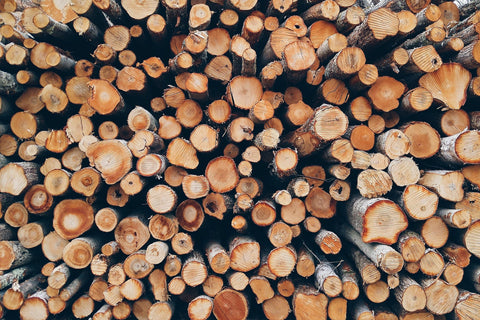
To make an authentic BBQ:
- Use a BBQ grill.
- Start by placing charcoal and add wood wool to light it up.
- NEVER use chemicals. It’ll show in your food.
- Add a wood of your choice. All dried hardwoods, fruitwoods, and nut woods best serve this purpose. The options are plenty: Hickory, oak wood, applewood, cherry, pecan; the list is never-ending. Choose your wood from a local firewood dealer.
- Start the fire and close the grill. Wait for the embers to form. When you see the white ember coat, smoke it with wood chunks to create the smoke. It’s time to add the ribs to the grill.
Is it better to cook ribs in the oven or the grill?
The choice is yours.
Cooking in the oven is easier and faster. Also, it gives you the upper hand on temperature control and requires less prep time. You can surprise the family and get it prepared in no time, even after coming home from work.
Get the racks prepped, preheat and set the temp, place the covered racks in, slam the door, and forget about it. The delicious aroma wafting from ribs will beckon you when done. Grill it on the stovetop for a perfect finish.
On the flip side, the grilling option is more of an art or a hobby than a recipe and requires a whole afternoon. Though it is not laborious, it undoubtedly is time-consuming and requires a lot of patience. But the result is nevertheless rewarding. BBQ tastes best when grilled and can become an utter disaster if you rush the cooking process. So, follow the slow cooking rule – slow and steady wins the race.
What temp and how long does it take to BBQ ribs?
Cook till done is the simple answer. Low, slow cooking is preferred over the high, fast cooking procedure as the latter burns and toughens the meat and renders uncooked insides. Never place your racks over the embers but on the opposite side of the heat source.
Temperature can vary mainly depending on your choice of the rib cut, cooking method, the performance of your grill/oven, and the weather.
The ideal temperature of preference and time
For grill – 350 degrees F/175 degrees C
For oven – 350 degrees F/175 degrees C
Grill Method:
- Place the prepped rib racks over indirect heat on a closed grill.
- Flip the sides over every 30 minutes.
- It’ll take anywhere from 1-1/2 to 2 hours to finish the cooking process.
- Occasionally spray the ribs with diluted apple cider vinegar, apple juice, or orange juice to keep the rib racks moist and prevent them from drying out.
- Apply BBQ sauce and grill it to finish.
Oven Method:
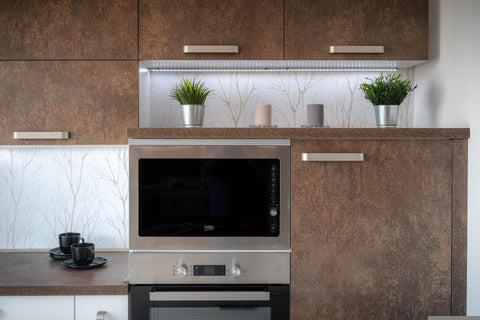
- Cover and bake the ribs in the oven for 2-1/2 to 4 hours.
- Apply the BBQ sauce and grill for the final touch.
- Stop cooking when the sauce caramelizes.
How to tell if the barbecuing process is complete?
Sense Check: Monitor for uniform coloring, smell, and visual clues from time to time.
Color – Deep mahogany.
Smell – Rich, sweet aroma.
Visual Clues: The meat pulls off from the ribs exposing about 3/4-1 inch of the rib bone.
Poke Test: Do a simple poke test used for checking cooked meat. Use a skewer, knife, or a toothpick to poke between the bones. When the meat is buttery tender, it’ll slide in freely. Now, your racks are ready to be plated. If you encounter any resistance, wait for a few more minutes and check again.
Instrument Check: Use a meat probe thermometer to poke into the meat between the bones to check for temperature and doneness. Usually, the temperature is higher at the bones than at the meat. So, be careful to poke on the beef and not anywhere near the bones. The thermometer should read anything between 195-205 degrees F for you to take your ribs off the grill confidently.
What is the 3-2-1 method of barbecuing ribs?
The 3-2-1 is the slow and low cooking method of barbecuing ribs.
- For the first three hours, cooking is done on indirect heat (225 F/110 C) bone side down.
- Spray in between to keep the meat from drying out.
- Wear thermal-resistant gloves before removing the racks from heat. Wrap and cover them completely using aluminum foil – you need at least two aluminum foils to wrap a single rack.
- Place them back on the grill for 2 hours, this time bone side up.
- Remove the racks from the heat and coat them with either a store-bought or home-prepped BBQ sauce. Grill.
This method suits best for pork spare ribs. For baby back ribs, you can choose a 2-2-1 way; else, they’ll become hard and dry.
Why do ribs take so long to cook?
The rib racks contain loads of fat and collagen, which takes time to break down and soften the connective tissue, releasing all the delicious flavor and taste throughout the meat. In addition, cooking at a reduced temperature for a prolonged time helps the barbecue become juicy and tender and pulls apart easily from the bone.
How do you speed up the cooking process?
If you’re not game for the long, slow process, here’s a method you can try.
Use aluminum foil to wrap the rib racks and place them in an oven or grill at 400 degrees F. Remove the wrap, brush it with your favorite BBQ sauce, layer by layer, and grill it for 5-10 minutes. Bingo! It’s complete.
Do you sear ribs?
Yes, of course! For finishing touch, sear the ribs after applying the BBQ sauce to both sides and grill for a lovely brown crust. Look out for a reddish-brown color and meat pulling off the ribs.
Once you get the hang of barbecuing, I’m sure you’re going to find numerous excuses to get your grill started. However, I bet you’re going to run out of them. Only the barbecuer in you knows that you don’t need a reason to start your grill. And you’ll be pleasantly surprised to see your family play along and help you keep your fire and passion going on.
Smoky wishes for your BBQ adventures!

